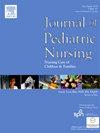The outcomes of implementing clinical guidelines to manage pediatric diabetic ketoacidosis in emergency department
IF 2.1
4区 医学
Q2 NURSING
Journal of Pediatric Nursing-Nursing Care of Children & Families
Pub Date : 2025-01-23
DOI:10.1016/j.pedn.2025.01.015
引用次数: 0
Abstract
Background
Type 1 diabetes is the most common endocrine health condition among youth. Healthcare professionals must consider evidence-based guidelines in managing children and adolescents with diabetic ketoacidosis (DKA). The current study aims to assess the outcomes of implementing clinical guidelines by the American Diabetes Association to manage DKA among pediatrics in an emergency department in Palestine.
Methods
A prospective cohort study was conducted among 60 children (<12 years old) with type 1 diabetes mellitus with DKA throughout February to May 2021. The children were assessed on arrival and during the next 6 h for implementing the recommended guidelines of DKA management (e.g., fluids and insulin therapy). The assessment included measurement of vital signs (blood pressure, heart rate, respiratory rate, O2 saturation), PH, HCO3-, and random blood glucose (RBG). A repeated-measure ANOVA was used to detect the difference between outcome measures during the follow-up period.
Results
After implementing the recommended guidelines of DKA management, all vital signs improved significantly in the follow-up period (p < 0.05). Also, PH, HCO3-, and random blood glucose (RBG) were significantly enhanced in the follow-up period (p < 0.05) among children with DKA.
Conclusion
The study demonstrated that the recommended DKA management guidelines effectively managed children with DKA in emergency departments. Healthcare professionals should adhere to the guidelines when treating children with DKA.
实施临床指南在急诊科处理儿童糖尿病酮症酸中毒的结果。
背景:1型糖尿病是青少年中最常见的内分泌健康问题。医疗保健专业人员必须考虑管理糖尿病酮症酸中毒(DKA)的儿童和青少年的循证指南。目前的研究旨在评估美国糖尿病协会在巴勒斯坦急诊科儿科中实施DKA临床指南的结果。方法:对60名儿童(2饱和度)、PH、HCO3-和随机血糖(RBG)进行前瞻性队列研究。使用重复测量方差分析来检测随访期间结果测量之间的差异。结果:实施DKA管理推荐指南后,随访期间各项生命体征均显著改善(p < 0.05),随机血糖(RBG)显著升高(p < 0.05)。结论:本研究表明,DKA管理推荐指南对急诊科DKA患儿具有有效的管理作用。医疗保健专业人员在治疗患有DKA的儿童时应遵守指南。
本文章由计算机程序翻译,如有差异,请以英文原文为准。
求助全文
约1分钟内获得全文
求助全文
来源期刊

Journal of Pediatric Nursing-Nursing Care of Children & Families
NURSING-PEDIATRICS
CiteScore
3.70
自引率
8.30%
发文量
291
审稿时长
65 days
期刊介绍:
Official Journal of the Society of Pediatric Nurses and the Pediatric Endocrinology Nursing Society (PENS)
The Journal of Pediatric Nursing: Nursing Care of Children and Families (JPN) is interested in publishing evidence-based practice, quality improvement, theory, and research papers on a variety of topics from US and international authors. JPN is the official journal of the Society of Pediatric Nurses and the Pediatric Endocrinology Nursing Society. Cecily L. Betz, PhD, RN, FAAN is the Founder and Editor in Chief.
Journal content covers the life span from birth to adolescence. Submissions should be pertinent to the nursing care needs of healthy and ill infants, children, and adolescents, addressing their biopsychosocial needs. JPN also features the following regular columns for which authors may submit brief papers: Hot Topics and Technology.
 求助内容:
求助内容: 应助结果提醒方式:
应助结果提醒方式:


